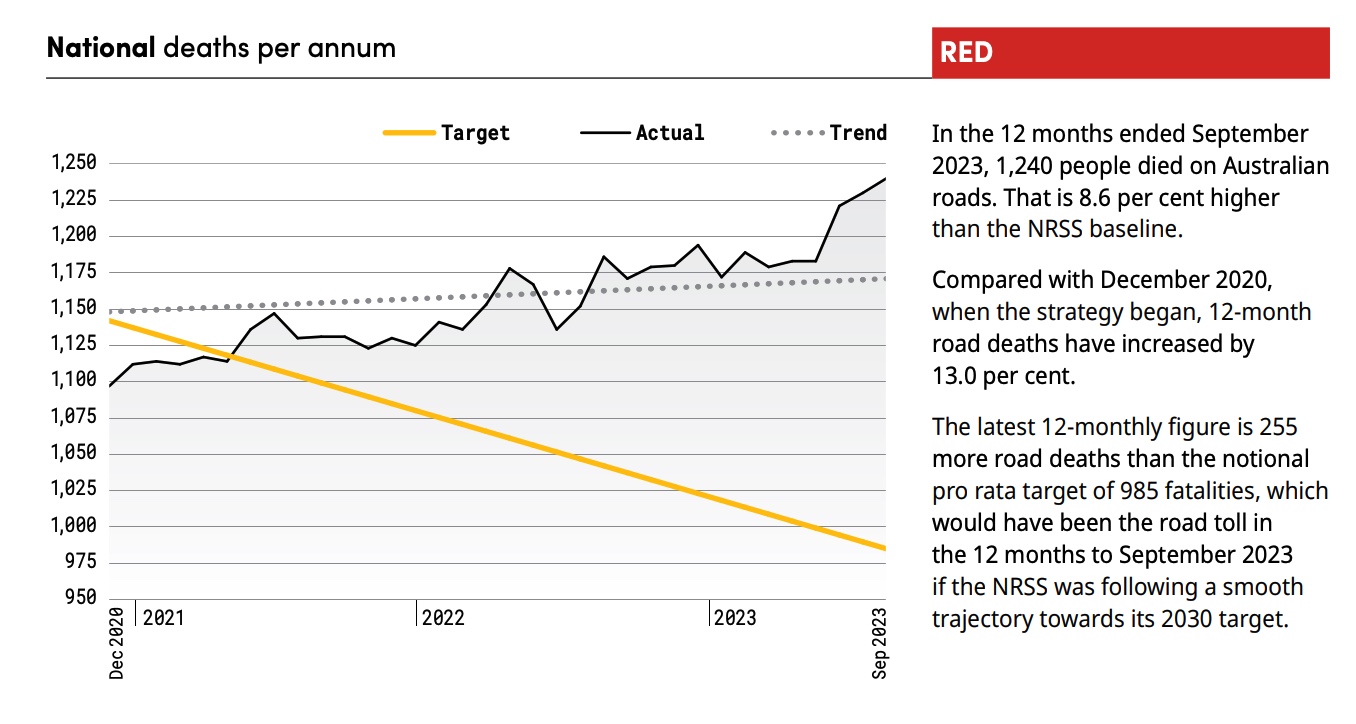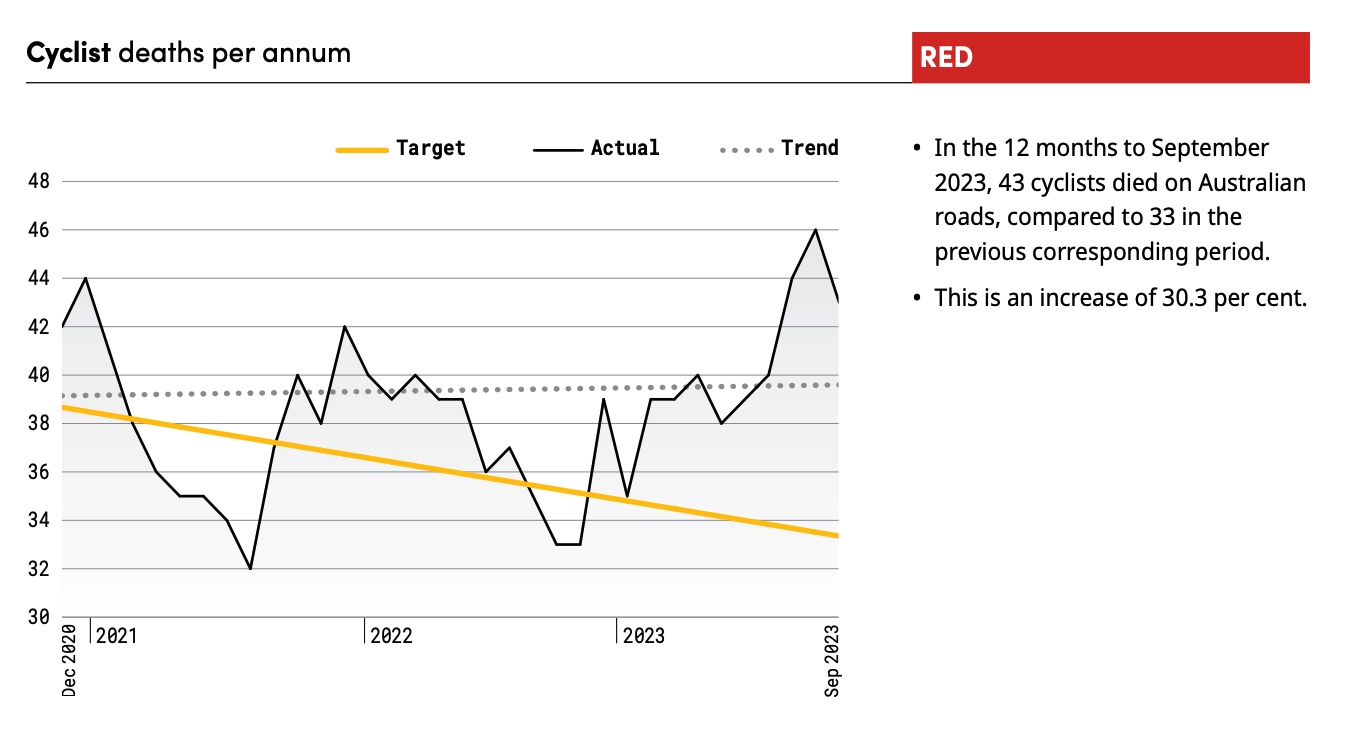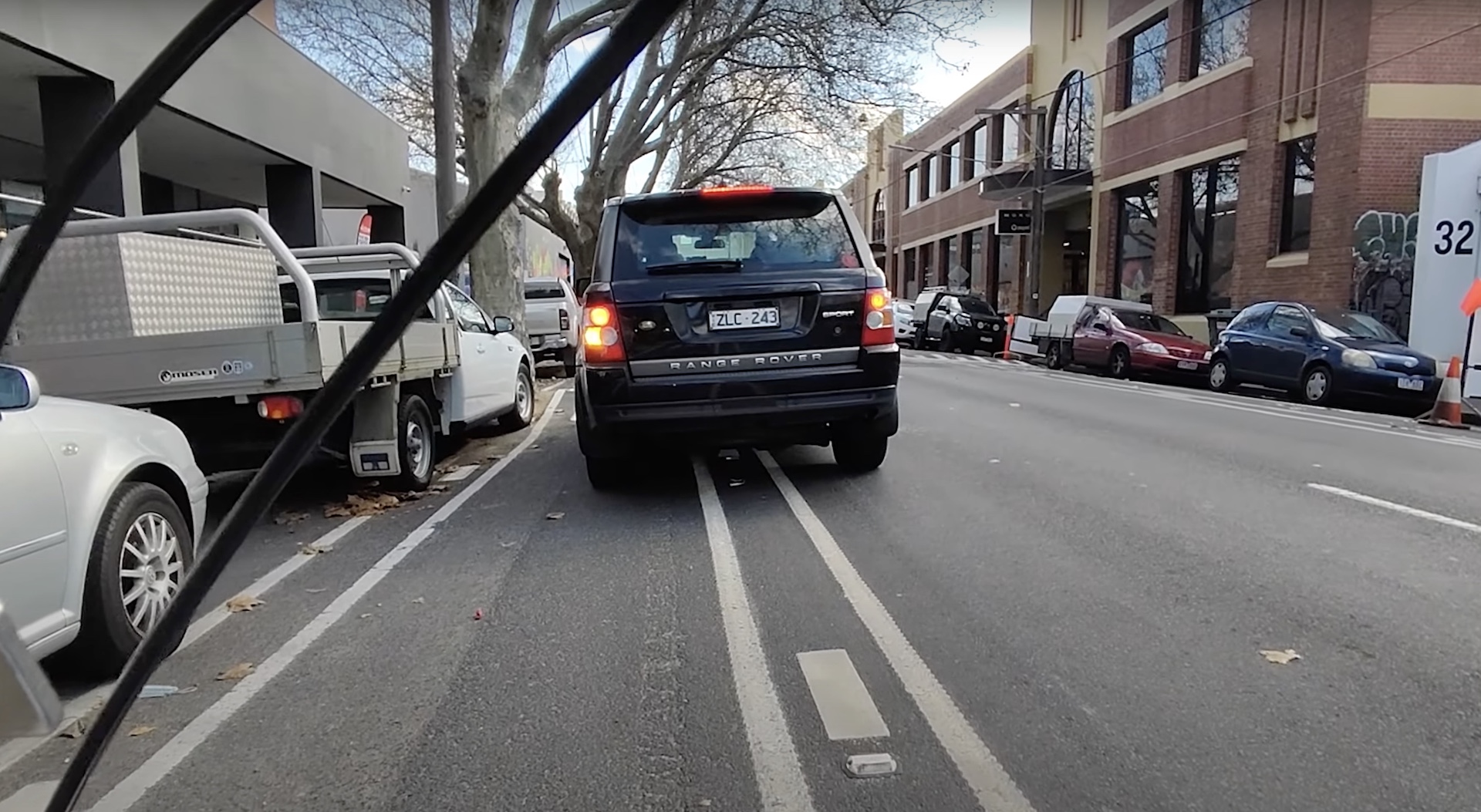If you’re one of the many Australian riders who’s turned to gravel riding recently, because you feel like road cycling is getting more dangerous, well, you aren’t wrong. A new report from the Australian Automobile Association (AAA) paints a troubling picture about the safety of Aussie roads, for all road users, but especially for cyclists.
Released in late October, the AAA report is a quarterly check-in on Australia’s progress towards its National Road Safety Strategy (NRSS) targets. Those targets, which are endorsed by federal, state and territory governments, are headlined by the goal of reducing total road deaths in Australia by 50% between 2021 and 2030.
Progress has not been good.
In the 12 months to September 30, 2023 total road fatalities in Australia were up by 4.6% – 1,240 deaths in one year, vs 1,186 for the same period a year earlier. And for the June to September quarter in 2023, total fatalities were up by 18.1%.

No state or territory is on track to meet or exceed its NRSS targets, and the same is true when you look at specific road-user groups. Drivers, passengers, pedestrians, motorcyclists, cyclists – none of these groups are on track for a 50% reduction in fatalities by 2030.
In the words of the AAA’s managing director, Michael Bradley, “it is clear Australia’s progress towards the plan’s targets is wildly off-track.” In fact, annual Australian road fatalities are actually 13% higher than when the NRSS began in December 2020*.
The numbers for cyclists are particularly troubling. The NRSS doesn’t include specific targets for different road user groups, but when you compare cyclist deaths to the overall target of a 50% reduction in deaths by 2030, the news is far from good.
In the 12 months to September 30, 2023, cycling deaths on Aussie roads rose by 30.3%; from 33 fatalities in 2021-2022 to 43 in 2022-2023.
(*Yes, part of 2020 was spent in COVID lockdowns, meaning there was less traffic volume that year compared to normal, but the road toll, while lower than normal, didn’t drop in line with the reduction in kilometres driven.)

As troubling as a 30.3% year-on-year increase is – and it absolutely is – there is more to the story. This sort of increase isn’t happening every year – indeed, cyclist deaths in 2022 were actually below the annual average that’s hovered at around 37 for the past two decades or more, making a return to above-average levels this year appear even more significant.
Of course, the fact there’s even a small increase, or that cyclist deaths are even happening at all, is clearly problematic. It’s clear that Australian roads aren’t getting safer like they’re meant to be. And again, as Bicycle Network reports, cyclist fatality rates haven’t really changed for more than 20 years.
So what’s going on? Why are our roads becoming increasingly dangerous? And why isn’t the National Road Safety Strategy working?
The AAA isn’t entirely sure, but believes it knows how to find out. “We cannot explain these dramatic increases or be confident about proposed solutions, simply because state governments are withholding crucial data about road quality and crash causes,” wrote managing director Michael Bradley. “Every Australian state and territory government has valuable data on road quality assessments, crash causes, and law enforcement issues, including the involvement of drink-driving, drugged-driving, speeding, and mobile phone use in crashes. This information could guide effective investments and policies to curb road deaths.”
Some believe that the COVID pandemic is at least partially to blame. Professor Stuart Newstead, director of Monash University’s Accident Research Centre, told The Guardian earlier this year that during the pandemic, the amount of traffic on the roads dropped by about 70%, while road trauma only dropped by 20%. That’s relevant because, Newstead says, it points to drivers taking greater risks on the road.
“When you take traffic off the road, you can speed more easily more often, and with police focused on other things, perhaps people thought they wouldn’t get caught,” Newstead said. He also believes there’s a skill issue that’s carried over post-pandemic.
“A lot of people, after being locked up and confined for so long, wanted to get out and travel, and people who have driven less lose their skills about how to interact with traffic.”
Additionally, distracted driving remains a largely unresolved problem that leaves many cyclists feeling vulnerable.
Whatever the reasons, the latest AAA report paints a scary picture, not just of the roads today, but of our chances of making those roads safer in future.
As Bicycle Network wrote in its 2021 paper about cyclist fatalities: “Australian governments regularly talk about working towards target zero, a time when no person dies on our roads, however this goal will not be reached if specific work is not done to reduce bike rider deaths.”
So what does that specific work look like? Minimum passing distance laws are now in place in every Australian state and territory which should be a step in the right direction. But the next steps are the same as they’ve always been: protected bike lanes to physically separate bikes from other vehicles; lower speed limits in built-up areas; perhaps even a shift to a “presumption of fault” model, in the case of bike crashes involving other drivers (motor vehicles are involved in 80% of crashes that result in the death of a cyclist). Such a policy would shift the burden of proof to drivers to show they weren’t at fault in an incident, rather than cyclists having to show that the drivers were (such laws exist in the Netherlands, Denmark, and elsewhere).
As ever, all of these measures will take time. There’s a long way to go if those NRSS targets are going to be met. In the meantime, at least there’s one silver lining for cyclists: there’s always plenty of quiet gravel roads to get out and explore.
Did we do a good job with this story?



